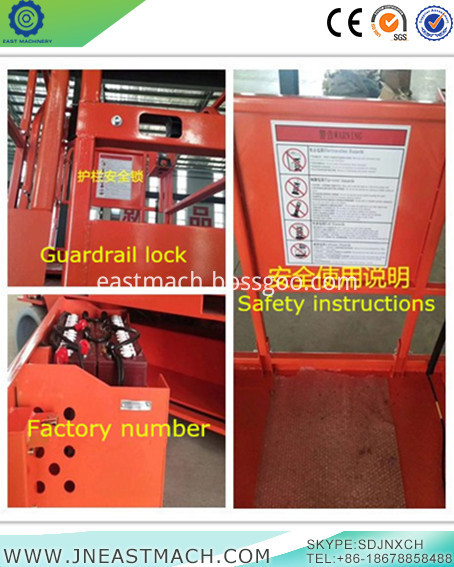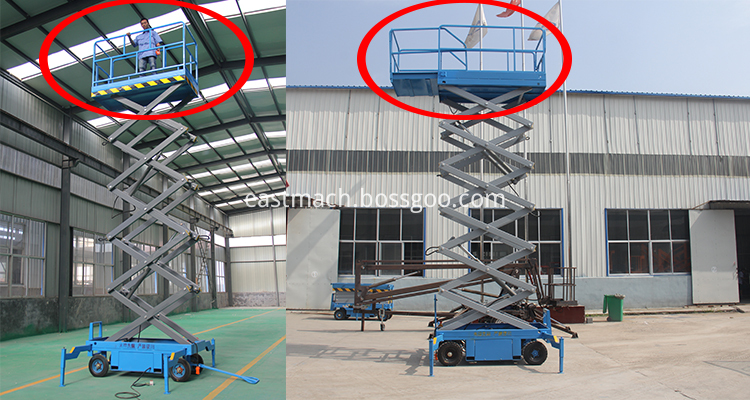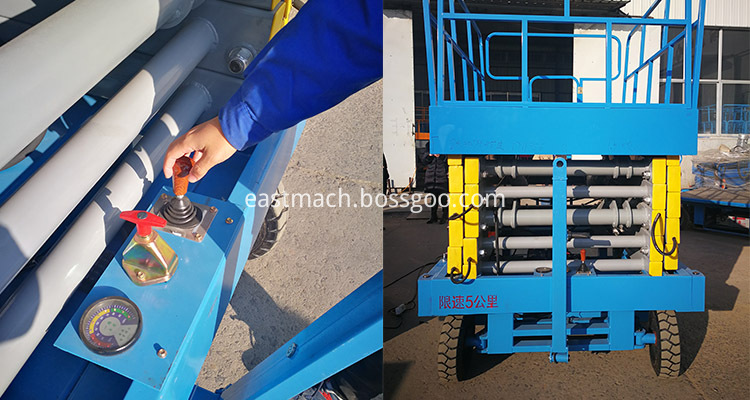As a new face in the National Two Conferences, Zhu Huarong, president of Changan Automobile, and Yin Tongyue, chairman of Chery Automobile, invariably focused their attention on the promotion of Chinese auto brands. In the government work report made by Premier Li Keqiang on March 5, the development of the automobile industry was mentioned several times. For example, promoting the development of new energy vehicles and other industries, expanding the opening up of new energy vehicles and other fields, lowering the import tariffs on automobiles, extending the preferential policies on the purchase of new energy vehicle vehicles for another three years, cancelling the restriction policies on used cars, improving the parking lot, etc. Convenient service facilities. In the process of the transformation of China's auto industry from scale-speed to quality-effectiveness, and from the transition from a large auto country to a powerful automobile, improving the innovation system, improving quality and reputation, and boosting self-owned brands are becoming the key to the development of the industry. Cui Dongshu, Secretary-General of the National Passenger Vehicle Market Information Association, said in an interview with a reporter from the China Business News that in the new round of development cycle, independent brands are facing many opportunities, such as the field of new energy vehicles, etc., which need to be smart. Seek more breakthroughs in new technology directions such as interconnection and autopilot. Usher in the best new era The annual sales volume of self-owned brand passenger vehicles has exceeded 10 million consecutive years since 2016 and is becoming one of the important signs of the rise of China's auto brands. CAAM statistics show that in 2017, the sales of automobiles totaled 28,879,000 vehicles, an increase of 3% year-on-year; among them, a total of 10.8467 million self-owned brand passenger vehicles were sold, an increase of 3.02% year-on-year, accounting for 43.88% of the total sales of passenger cars. The share increased by 0.69 percentage points over the same period of last year. In the rapid growth of sales, there are also quality improvements. The 2017 China Auto Sales Satisfaction Survey (SSI) released by JD Power, the world's leading market research organization, shows that from 2000 to 2017, the gap between the quality of new cars of independent brands and international brands is gradually narrowing. The number of vehicle problems (PP100) narrowed from 397 points to 13 points, and the gap between the two will disappear within the next two or three years. Especially in the three major areas of interior decoration, configuration/manipulation/dashboard and audio/communication/entertainment/navigation, the self-owned brands are achieving a catch-up to international brands with a slight advantage. However, the JD Power research report also shows that the gap between new brands of independent brands and international brands still exists. The three areas with the greatest gap are the engine/transmission system, the appearance of the car body and the driving experience, which are 5.8 PP100 and 3.7 higher than the international brands respectively. PP100 and 2.2 PP100. With the rapid improvement of quality and higher configuration, the price is more advantageous than joint-venture brands. Consumers' recognition and loyalty to self-owned brands are also increasing. The data shows that from 2005 to 2017, the market share of self-owned brand passenger cars increased from 26% to 43.9%; in 2017, among the consumers whose first car was their own brands, the proportion of self-owned brand purchases was as high as 47%. . In the eyes of many people in the industry, the bid to bid farewell to imitation, adhere to the positive development, and gradually establish R & D processes, standards and systems, which is the main reason for the significant increase in the quality of Chinese brand passenger cars in recent years. For example, current Changan, Guangzhou Automobile, Geely and other car companies already have a complete positive R&D system and made breakthroughs in several core technology areas. In addition, despite the fact that the Chinese auto market is entering a micro-growth zone, the continued growth in demand for car purchases in the central and western regions and third- and fourth-tier cities will inject more growth momentum into China's passenger vehicle brands. The analysis of the “Chinese Car Brand Blue Book: China Passenger Car Brand Development Report (2017)†believes that with the rapid rise of the economy in the central and western regions, the passenger car market in the central and western regions will usher in rapid development, while the eastern region will enter into a peak exchange. The dual factors will drive the steady growth of the Chinese brand passenger vehicle market. Short board still exists “The road is not smooth and the task is complex and arduous, but the prospects are excellent.†At the 2018 China Automotive Brand Development Summit, Geely Automobile Chairman Li Shufu gave his own conclusions concerning the development prospects of China's own brand cars. In Li Shufu's view, although China's auto manufacturing industry has made considerable progress in recent years, foreign brands are still very strong, and joint venture brands occupy more than 45% of the market share. "Let China's auto brands enter the mid-to-high-end market and continue to occupy a share in the mid-to-high-end market. This time can truly shape the ability of the Chinese auto industry to survive and develop." The statistical data of the China Automotive Technology and Research Center also confirms Li Shufu's conclusion. China's passenger vehicle brands still focus on the low-end market. In 2016, the share of Chinese brand passenger vehicles in the low-end market was approximately 76.1%. From the price point of view, the sales price of Chinese brand passenger cars is concentrated in the range of 50,000 to 150,000 yuan, with an average transaction price of only 88,200 yuan. The average transaction price of Great Wall Motor is 119,900 yuan, followed by BYD is 119,700. Yuan, while the vast majority of other Chinese passenger car brand transaction prices are less than 100,000 yuan. According to JD Power research, the price factor for car purchases for consumers has fallen from the top priority in 2000 to the fifth place in 2017. Brands, quality, value, and technology have become the top four factors for car buyers to consider. "Under the premise of maintaining price advantage, we can not fight price wars, but we must fight technical warfare, brand warfare, quality warfare, service warfare and corporate moral warfare," said Li Shufu. On April 6, 2017, the Ministry of Industry and Information Technology, the National Development and Reform Commission, and the Ministry of Science and Technology clearly stated in the “Long-Term Development Plan for the Automotive Industry†that while China’s auto industry continues to grow and develop, and the market recognition has increased substantially, it’s a big but not a strong issue. It is still outstanding. It is manifested in the lack of key core technologies, shortcomings in the industrial chain, the need to improve the innovation system, the slowdown in international brand building, the urgent need to improve corporate strength, the risk of overcapacity, and the need to improve the safety performance of commercial vehicles. In Cui Dongshu's view, the lack of core technologies and basic accumulation of self-owned brands has also created a passive situation in the development of family cars. It is understood that in the field of SUV and MPV, brands represented by Great Wall Haval have broken through the “blockade line†of joint-venture brands and have an absolute advantage in sales, but it is still difficult to compete in the field of cars. For example, in the SUV market, China’s own brands have an absolute advantage, accounting for 59.35% of total sales. In contrast, the Japanese brand share is 16.23%, the Germans 9.73%, the American Department 8.92%, the Korean and the law system's share is only 2.63% and 2.08%. In the MPV field, the market share of Chinese brands is as high as 83.56%. Wang Dongsheng, deputy secretary of the Jianghuai Automobile Party Committee, said that the gap between us and world-famous brands is not just in hardware, but also in software, we need to accurately identify customers, produce products that are close to customers, adapt to customers, and meet customer needs. Build up the brand's upward "chassis" In order to promote the transformation of the automotive industry from scale-speed to quality-benefit, and to realize the transition from a big automobile country to a powerful automobile country, the "Mid-term and Long-term Development Plan for the Automotive Industry" puts forward a series of support measures to strengthen brand cultivation and strengthen and expand the Chinese brand. Cars, fostering enterprise groups with international competitiveness have become a top priority. According to the goals set out in the above plan, by 2020, a number of world-renowned auto brands will be built, and the safety performance of commercial vehicles will be greatly improved; by 2025, the production and sales volume of some Chinese brand auto companies will enter the top ten in the world. The reporter combed out that in 2017, the top ten global car sales rankings were firmly occupied by foreign brands, Volkswagen, Toyota and Renault - Nissan - Mitsubishi Alliance's sales exceeded the 10 million mark, ranked 10th Suzuki Motor Year The sales volume is also about 3 million. This also means that China's brand automobile production and sales into the top ten in the world need to pass at least 3 million threshold. It is understood that in 2017, Geely Automobile Group's cumulative sales reached 1.247 million units, becoming the second Chinese auto brand that has succeeded in entering the ranks after Changan Automobile. From the current point of view, Geely Automobile, Changan Automobile and Great Wall Motors are becoming the "seed players" of the top ten sprints in the world. During the two sessions this year, the “collective upwards†of independent brands has also become one of the hot topics discussed by the deputies and members. According to Zhu Huarong, deputy to the National People's Congress and president of Chang'an Automobile, the automobile brand is an important support for the national brand. If the auto brand cannot effectively break through upwards, the realization of the great national dream of a great rejuvenation of the Chinese nation will also be hampered. To this end, Zhu Huarong suggested that the media should vigorously promote Chinese auto brands and boost the brand's upward direction; establish a national, non-profit, fair and impartial professional and authoritative selection agency - the "Oscar of China's automobile manufacturing industry." "It is recommended that all areas should display the Chinese brand image. When centralizing tender procurement, we advocate the priority use of Chinese car brands." Also proposed to focus on brand building is NPC deputy and Yin Tongyue, Chairman of Chery Automobile. “At present, China is not yet a big brand country and lacks a number of top brands in the world. Compared with Japan and South Korea and other developed countries’ emphasis on their own brands, the government’s support for brand awareness and brand promotion needs to be further strengthened,†said Yin Tongyue. Yin Tongyue suggested that in terms of system and policy, the government should support long-term domestic brand building, coordinate the advancement of fiscal, taxation, and financial policies to the well-known brands in China, help the healthy growth of domestic brands, and guide the public to use domestically-branded products to establish a sense of national brand honor and Responsibility. At the same time, the state must also pay attention to the protection of local brands overseas, and use the national power to establish the credibility of Chinese brands overseas, so that independent brands can grow stronger with confidence and courage. “It is very difficult for an independent brand to achieve a retrograde attack. Companies need strength and cannot be eager to achieve success.†Cui Dongshu said that from the spirit conveyed by the two associations, Premier Li Keqiang’s report on the government’s work put forward “actively expanding imports and lowering import tariffs on automobilesâ€. Self-owned brand cars will face greater pressure and not a better environment. Independent brand cars should clearly recognize the current difficulties and pressures, actively promote independent innovation and positive R&D, and lay a solid foundation for development instead of Blindly pursue the brand's high-end and luxury.
Lift Platform is nearly applicable to work in all industries. Lift Platform Parts are mainly include hydraulic jacking device, battery, remote control handle and so on.
The control panels of Electric Power Scissor Lift are available on the designated floors and the Lift Table.
Scissor Lift Platform Spare Part works through three buttons on the control panels.
Electric Lift Platform Package can be customized according to your requirement.
Lift Platform Parts Lift Tables,Truck Parts Tail Lift,Lift Platform,Vertical Lift Platform Parts Jinan East Machinery Co.,Ltd. , https://www.jneastmach.com




